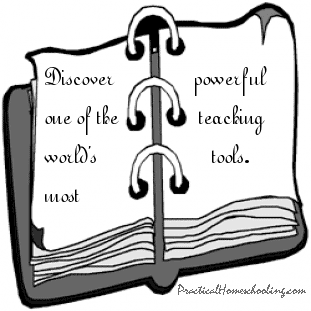 I found a great new homeschooling tool this year - a sketch book. I love to read aloud to my children. Using a sketchbook helps me to milk that reading time for all it's worth educationally.
I found a great new homeschooling tool this year - a sketch book. I love to read aloud to my children. Using a sketchbook helps me to milk that reading time for all it's worth educationally.
This year I have been working through an overview of modern American history with my elementary-aged children. I wanted them to understand and remember eras such as World War I, The Depression, and World War II.
To accomplish this goal, I gave each of the children a bound sketch book. I started sketching diagrams and writing key words, then displaying my sketched pages so the children could use them as inspiration for their own drawings.
To highlight World War I, I drew a map of Germany, Bosnia, and Hungary and pinpointed Sarajevo. I sketched cameos (in my rather prehistoric drawing style) of the Archduke Ferdinand and his wife Sophia, and explained how their assassination triggered the war. Next, I drew France, dotted Paris, and drew squiggly lines to indicate the trench warfare that was tearing through the country.
When our first page began to fill in, we continued onto another. For the Russian Revolution of 1917, I sketched Karl Marx and his quote, "Workers of the world, unite! You have nothing to lose but your chains, and a world to win." We joked about the quote, "Poor spellers of the world untie!" We learned that Bolsheviks meant workers, and Czar came from Caesar. We talked about the murder of the last Czar of Russia and the story of his daughter Anastasia. Then discussed capitalism, communism, and the famous book Les Miserables (since we'd seen the video). Not to any great length, mind you, but enough to highlight what happens when biblical principles are ignored and exploitation sets in from either side.
When we came to the Depression, we drew Hoovervilles (shack towns), Hoover flags (the change pocket flapping inside out of a trouser), and Hoover blankets (newspapers). Hoover was blamed for the Depression because people felt he was protecting businesses.
In studying World War II, we learned that "Luftwaffe" was the name of the German Air Force. Sixty Luftwaffe pilots flew over the English channel at 5,000 feet to bomb 50 allied ships in a convoy, but 16 English Hurricane fighters came down on them from 16,000 feet, driving them off. Pilot Boder said, "It's still Churchill's Channel," while Hitler spread propaganda that, "The German Air Force dominates the English Channel." Probably just all the numbers in this paragraph confused you a bit; sketching this scene brought it to life for my children.
I used a health textbook this year that had lots of impressive information. Each lesson was followed by a worksheet, which I thought would give me something impressive to stuff in the children's portfolios. The children figured out that the boldfaced words in the text went somewhere on their worksheet. They simply distributed the words on the sheet with as little mental processing as possible. (Just so you know, my kids are normal.) We had our portfolio fodder, but the children could discuss little of the material. In contrast, sketching processed the information kinesthetically and provided a platform for dialogue. Instead of asking each child to tell me by rote what he learned, we all participated together in conversation about the material, and I noticed they cared deeply about the details that went into their drawings.
The idea behind Charlotte Mason's narration method, and the famous "KONOS Dialogue," is that children first learn to process information "hands on," outside their heads. This is an important prerequisite to developing thinking skills, the ability to process information inside their heads.
Printing the titles, key words, and quotations gives the children spelling practice without them constantly asking me to respell each word for them. On a practical mommy side, it is easier to take a moment away from the lesson to deal with my younger children, since drawing holds the older children's attention until I can return.
History was so powerful this way, I decided to try a second round of sketchbooks to cover science. In the same way, interest was much higher when we used the sketch books.
This simple technique has been one of the surprising joys of this school year. I spend some of my best homeschooling hours reading with my children, and now sketching together is reaping a great education from our reading time.